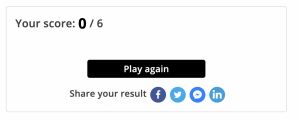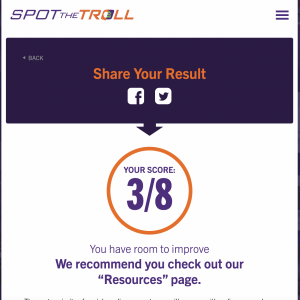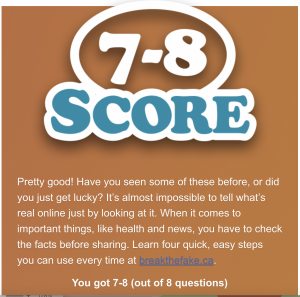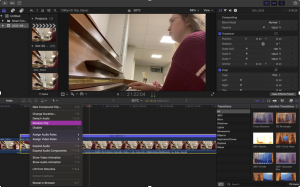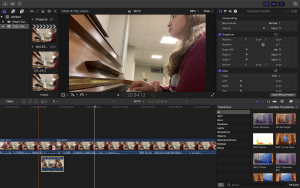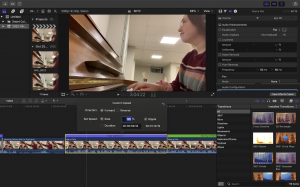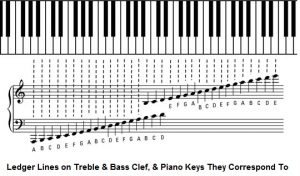In class, we learned about LPP which is language policy and planning. It was an interesting topic to talk about in our groups. My group discussed the Canadian citizenship tests and how people need to write these tests in English or French. The tests also require you to have taken English classes before you even write the test. I think it shows Canada’s hypocrisy as we talk about the diverse amount of people here, but don’t talk about the ways they have to change to live here. On the other hand, I do understand that it would be really hard to communicate with someone if you didn’t speak English but moved to Canada. If I moved to Germany, I would not be able to communicate very well, as I don’t speak German. I have heard that it is easier to learn a language if you are immersed in the language. Moving to a new country and needing to speak a new language would be very stressful but you might be able to learn the language faster if you experience it.
In my group, we also talked about names. Someone mentioned a boy from China was in her class. His name was Harry but that wasn’t his name given at birth. He changed his name when he moved to Canada with his family to make Canadians feel comfortable saying his name. That is crazy, having to change your name to make others feel better. I can’t imagine growing up as Meghan Wright and then moving somewhere totally new where I have to make new friends, learn a new language, and find my identity as a new person. I had someone in my school choose their name to something they liked in elementary school but didn’t like it as she got older and more mature.
I think it’s interesting that Canada’s second language is French, but we have such a large population of other cultures that speak other languages. For example, where I live, we have a large Filipino population, but we don’t have any language classes that our Filipino population can feel represented in. We did have to take French up until grade 8. I just find this really interesting because the chances are that I will most likely need to communicate with someone in a Filipino language rather than in French. I am also very interested that our two national languages don’t include an Indigenous language. I can’t say I’m surprised as when Canada was created Indigenous peoples were not viewed as equals, but I am a little confused why we don’t celebrate indigenous language as much as we should. Many indigenous people lost their language through residential schools and 60’s scoop, so why don’t we do more to reincorporate their language. It needs to be clear that if we are incorporating an indigenous language into our country indigenous people need to have power over it. In feedback from Rubina, I learned that we need more indigenous language speakers. Because the language is diminishing we need more people to speak it and pass it on to others. The feedback also stated that it is a privilege not to take an Indigenous language course because you have the choice to learn the language or not. For example, as I stated above many people entering Canada are required to learn English or French to be able to take the citizenship test. It is not their choice if they want to live in Canada they have to learn this language, we get the choice. We have the opportunity to learn an Indigenous language if we want to but it is not a requirement
The reading by Coelho (2012) says that we as teachers should include our student’s languages in our classroom. One example they give is using the non-Englsih speaking student’s first language as a written reference (p. 237). This is a good way to include their language and help them learn without totally ignoring their language. For example, if a French student is learning to say English numbers you can write the French number and the English number so the student can have multilingual awareness.
The Coelho reading also talked about intonation (p. 241). I learned a little about intonation while I was in French 100, for example when you ask a question you say the last word in a higher pitch. I didn’t realize that we do this in English as well. The image by Danwyn (2019) linked here is how we use intonation in English. While looking at this image, I had to say all the examples out loud. It is funny how my brain just knows how to ask the question without needing to read the intonation. I cannot imagine how hard it would be to learn English as an alternative language. So many statements can be misconstrued by your tone. If someone were to say “nice shirt” there are so many ways you can take it. You might think: do they like my shirt, do I have something on my shirt, are they making fun of me? Some of these questions could be solved by the intonation of the person’s voice.
Finally, the Coelho reading speaks on the miscommunication that comes from speaking verbally with students, specifically EAL learners. The example given in the book is a teacher telling students to answer questions 1 to 6. Students might hear “Do questions 1,2,6” or “Do question 126” (Coelho, 2017, p.237). People learn differently, so some students may need to hear the assignment, some need to read it, and some may need both. It is fascinating that people just talk and expect others to understand them. For example, one day I was cleaning out our family trailer, I had a bucket with garbage in it. My mom told me to throw it all out, the whole thing. So that’s what I did, I threw the entire bucket into the dumpster. Funny enough, that is not what my mom wanted; she just wanted all the garbage in the bucket thrown out. We are both English speakers, but we thought two different things from the words that my mom said. This example shows me the importance of clarification and asking questions. As a teacher I will never turn down a question for being “a dumb question”, this can often result in students feeling isolated and might limit them in asking more questions.
References
Danwyn. (2019, March 2). Rising and falling intonation- examples & exercises. AccentsU. Retrieved October 9th, 2021, from http://www.accentu.com.au/intonation/.
Coelho, E. (2012). Chapter 8. In Language and learning in multilingual classrooms: A practical approach (pp. 237–241). essay, Multilingual Matters.


